Last Updated on July 22, 2024 by teamobn
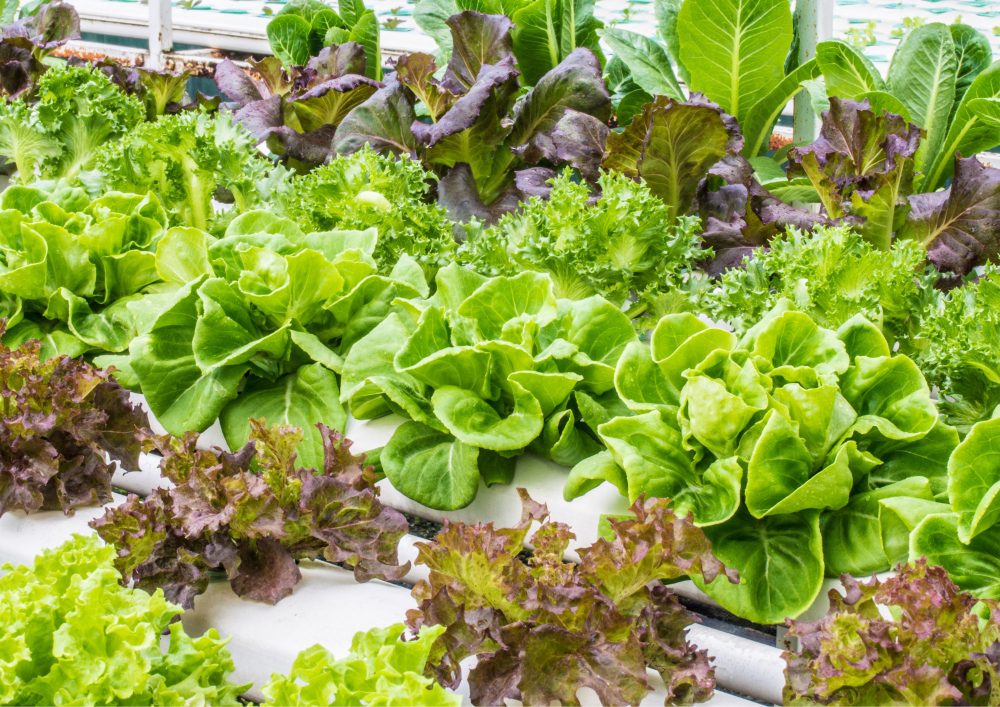
So, you want to grow plants but don’t have a lot of space? Hydroponics is your answer. It lets you grow plants without using soil.
Think of this guide as Hydroponics 101 for DIY folks like you. Growing a soil-less garden is not as hard as you would think. You’ll learn how to set up your system at home and enjoy fresh plants all year. Sounds good? Keep reading!
Contents
What is Hydroponics
How exactly does a “garden without soil” or hydroponics work? Shouldn’t plants get their nutrients from the soil? To remove the mysteries of this gardening method, below are the basics of hydroponics.
The Basic Idea Behind Hydroponics
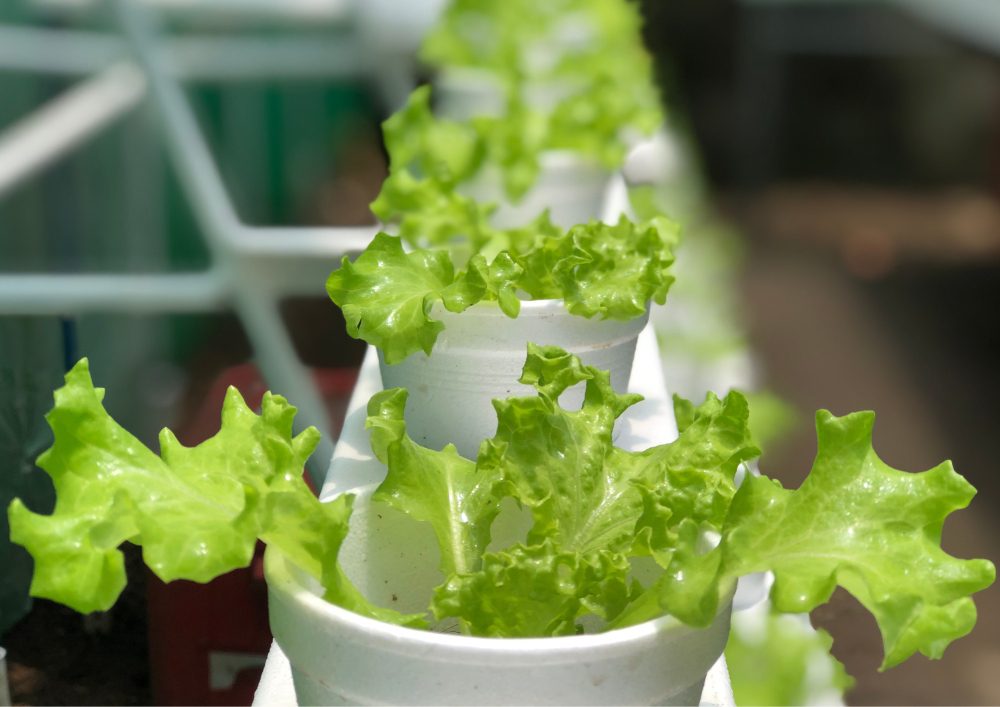
Hydroponics flips traditional gardening on its head. Instead of soil, we use water enriched with nutrients. This method gives you better control over the conditions in which your plants grow. No more worrying about soil quality or outdoor weather.
How Plants Get What They Need
In soil-based gardens, plant roots have to seek out nutrients. It’s like a treasure hunt. Hydroponics streamlines this process. Mix nutrients directly into the water, and the plant roots soak it up. It’s efficient and leads to faster growth.
Nutrients in the Water
The right nutrient mix is key to hydroponics. Plants need elements like nitrogen, potassium, and phosphorus to thrive. You can find pre-mixed solutions made just for hydroponic systems. They remove the guesswork and help your plants grow strong and healthy.
Roots in Water vs. Soil
Root systems in hydroponics have it easier than their soil-dwelling cousins. They get direct access to all the nutrients they need. No searching is required. This leads to quicker growth and less stress on your plants.
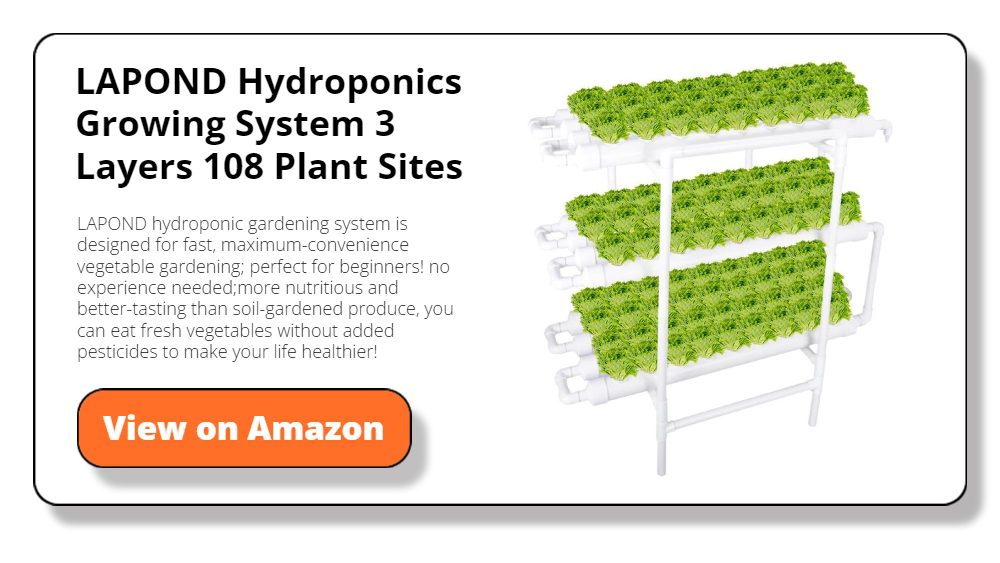
Why Hydroponics
This section will break down the advantages of going soilless. From saving water to speeding up plant growth, you’ll see why hydroponics is worth considering.
Water Efficiency
One of the standout benefits of hydroponics is its efficient use of water. Traditional soil gardening can waste a lot of water through runoff and evaporation. Hydroponic systems recycle water in a closed loop, reducing waste. This conserves water and saves you money in the long run.
Space-Saving Design
Hydroponic systems are a game-changer for those with limited space. No need for a sprawling garden; you can set up a hydroponic system in a small room or even a closet. Vertical hydroponic setups allow you to make the most of your available space, growing more plants in less square footage.
Speedy Plant Growth
If you’re looking for quicker harvests, hydroponics delivers. Since the nutrient solution goes directly to the roots, plants grow faster. No time is wasted searching for nutrients in the soil. Many growers report quicker growth rates and higher yields than traditional soil-based methods.
Less Pest and Disease Risk
Say goodbye to most soil-borne pests and diseases. Hydroponic systems are generally cleaner environments for plant growth. Without soil, many common garden pests and diseases can’t survive. A hydroponic system would mean healthier crops and big savings on your garden expenses.
Hydroponics is the answer for home gardening with a tight space. In addition, a “soilless garden” is much less expensive than your traditional garden.
Types of Hydroponic Systems
There are different kinds of hydroponic systems to consider for your indoor space.
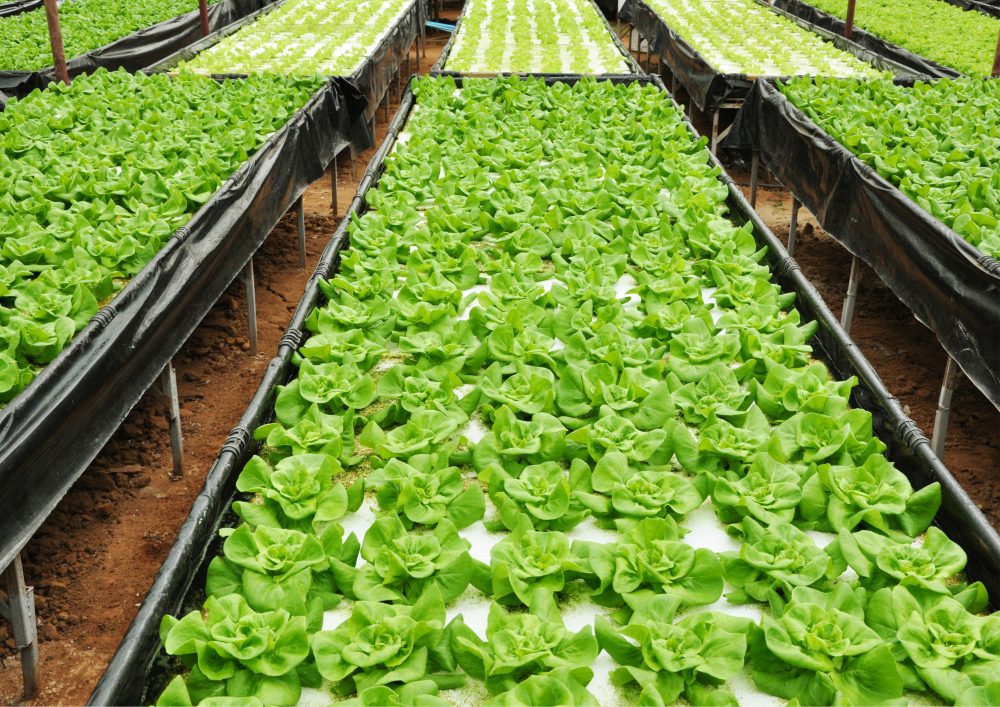
Nutrient Film System
The Nutrient Film System in hydroponics, often abbreviated as NFT, uses a shallow stream of nutrient-rich water that flows over the roots. Plants are generally housed in channels that allow the roots to hang down, soaking up the necessary nutrients.
An NFS system in hydroponics is a great choice if you are looking for a hydroponic garden on a tight budget since you only need a few equipment. However, an NFT cannot support large plants with longer roots like cabbages. Another drawback is that roots can dry out quickly if the water flow is interrupted.
Deep Water Culture
Deep Water Culture in hydroponics, or DWC, is where the plants hang from net pots while their roots dip in a nutrient-rich water solution. An air pump provides oxygen through the water.
DWC is simple to set up and ideal for beginners. Plants grow fast since they have direct access to all the necessary nutrients. On the downside, this system is more prone to diseases if the water temperature and nutrient levels are not properly managed.
Aeroponics
Plant roots hang in the air in an aeroponic system and are misted with a nutrient solution. The system essentially replaces water tanks with a misting nozzle to maximize the oxygen exposure for the roots.
Aeroponics often results in quick growth and excellent nutrient absorption. However, it’s a more complex system that can be pricey. Also, any failure in the misting system can lead to quick root drying, making it less forgiving than other systems.
Drip System
A drip system for hydroponics gardens delivers a nutrient solution to each plant through tubing and emitters. You can grow most kinds of crops or flowers with a drip system due to how close the setup is to a traditional garden setup.
The flexibility of the drip system lets you grow tomatoes, cabbages, and basil. This system is highly adaptable and can be expanded easily. However, they can be more complicated to set up, and if the emitters get clogged, plants can suffer from uneven nutrient distribution.
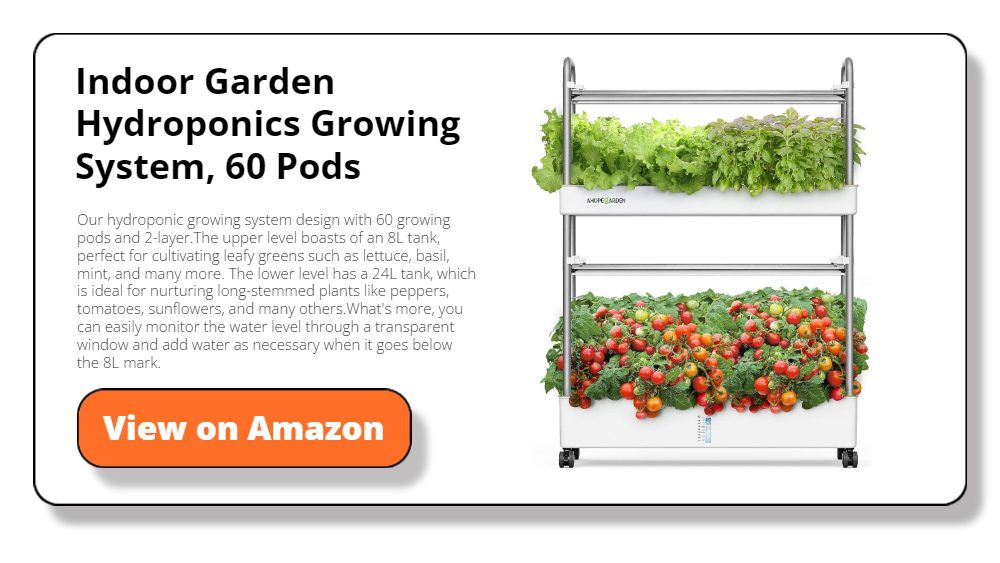
Ebb and Flow
The Ebb and Flow system in hydroponics, also known as flood and drain, involves a grow tray and a nutrient reservoir. A pump floods the grow tray with nutrient solution at set intervals and then drains it back. Since there is no limit to the size of the grow tray, you can grow practically any plant with the ebb and flow system, like tomatoes or basil.
This system offers a reliable way to water and feed your plants. However, it does require more space due to the reservoir and can be a bit more complex to set up. Timing the flooding and draining is crucial for optimal plant health.
Dutch Buckets
Dutch Buckets work as individual containers for each plant and are fed by a common nutrient reservoir in hydroponics systems. These are particularly good for vining crops like tomatoes, cucumbers, and even some fruits like strawberries.
This system is highly versatile and easily expandable. Each bucket can be customized to meet the nutrient needs of the specific plant it houses. Because of the bucket and equipment sizes, the system will not work in tight indoor garden spaces.
Wick System
The Wick System is one of the simplest hydroponic methods. Plants are grown in containers filled with a medium like perlite or coco coir. Nutrient-rich water is wicked up from a reservoir below. The Wick System is well-suited for herbs like mint and oregano or leafy greens like lettuce and spinach.
The system is straightforward and great for beginners. Since there are no moving parts, it’s also low-maintenance. One shortcoming of the wick system is poor nutrient delivery to plants with large roots.
The various kinds of hydroponics have their style of delivering nutrients and oxygen to plants. Knowing what kind of plants you want to grow and the budget you are willing to spend can help you find the right hydroponic system for your home.
Materials Needed
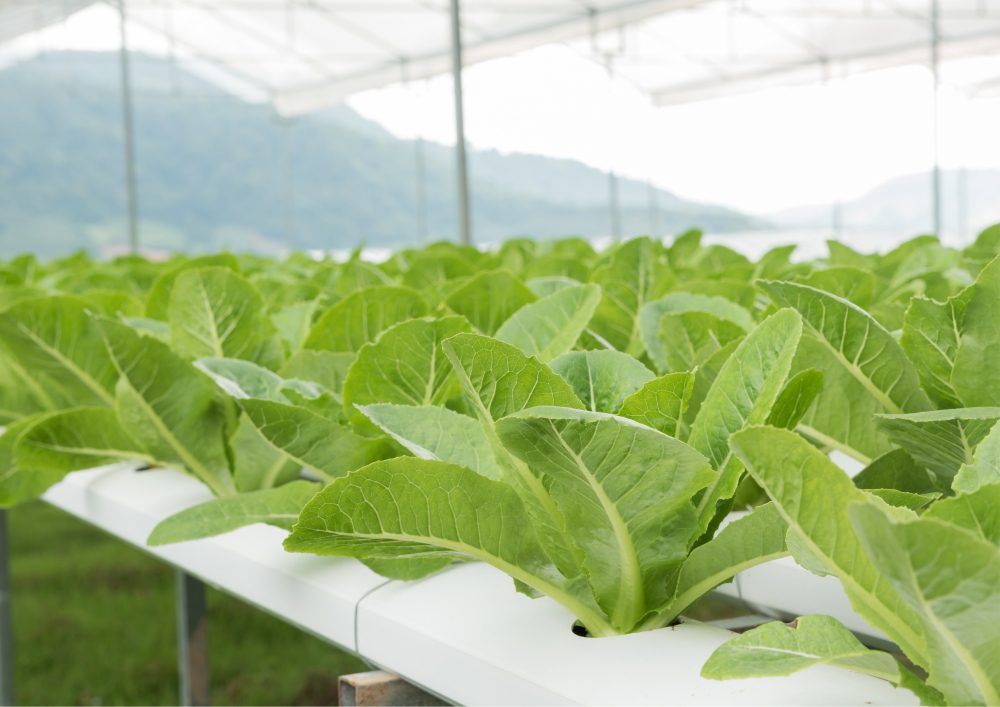
To give you a clear idea of a hydroponic setup in your indoor space, below are the materials and equipment needed for most Hydroponic systems:
Grow Trays and Tables
Grow trays and tables serve as the foundation of your hydroponic system. They hold your plants in place and often contain the nutrient solution. These trays can be flooded with a nutrient solution, depending on the system.
Trays can also support pots filled with a growing medium like perlite or coco coir. Grow trays can range from shallow to deep depending on your plant’s needs and the system you’re using.
When shopping for growing trays and tables, size, and depth are key factors. Make sure the trays fit well in your designated grow space. Shallower trays can work well growing smaller plants like herbs or leafy greens. You’ll want deeper trays for larger plants like tomatoes to accommodate more extensive root systems.
Light
Most plants require the sun to grow healthy, which is where an indoor garden’s lighting system comes in. Your indoor lighting will act as an artificial sun to your hydroponic setup. A good basis for the lighting system of your hydroponic is the requirements of plants you plan on growing.
Look for lighting systems specifically designed for hydroponic gardens. LED or fluorescent lights are popular choices. These bulbs are affordable and are able to give most of what your plant needs. LED lamps are also widely available in retail stores, unlike specialty lights that are only available among gardening vendors.
Full-spectrum bulbs are generally the best choice, as they mimic natural sunlight. Consider adjustable lighting setups to change the light height as your plants grow. Also, think about timers to automate the light cycle, making your system more hands-off. An issue with these bulbs is their availability since you can only buy them from specific shops.
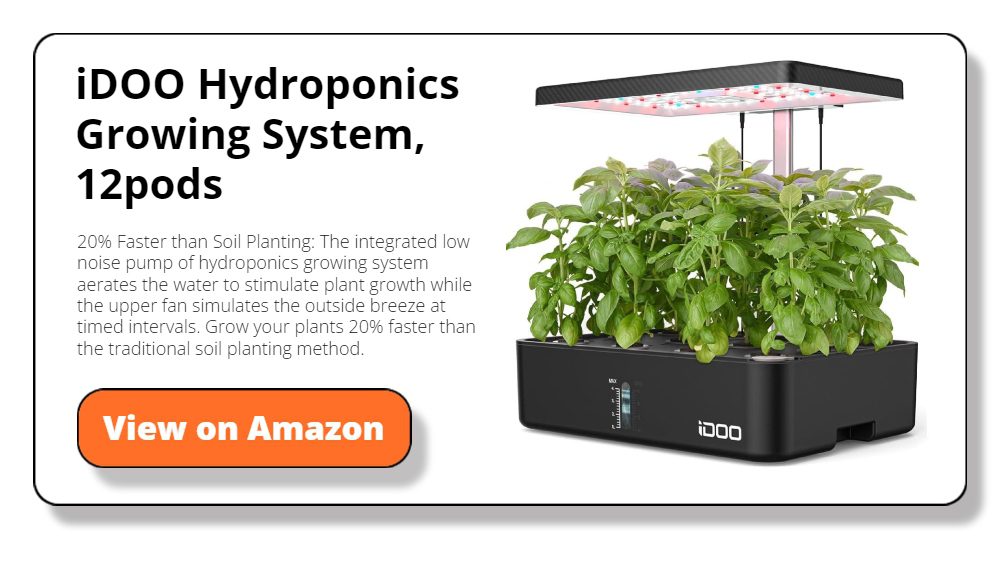
Water
Every plant requires water, which is also an important part of your hydroponic setup. Since soil isn’t used, water serves as the medium through which nutrients are delivered to the plants.
The purity of the water will affect your plant’s growth and yields. Starting with clean, filtered water can make managing nutrient and pH levels easier. Some growers even opt for reverse osmosis systems to ensure water purity.
Remember, the water temperature, as too hot or too cold, can impact plant health. Suppose you are looking for better yields on your vegetable or fruit plant. In that case, you will want to optimize the water’s oxygen levels. Premium air pumps consistently supply oxygen to your plants for a prolonged period.
Fertilizer or Nutrients
In hydroponics, fertilizer or nutrients replace the nutrients usually found in soil. Hydroponic fertilizers come in solution form that easily dissolves in water. In addition, this type of fertilizer has specially formulated nutrients that are easily absorbed by the roots.
When choosing nutrients, ensure they’re formulated for hydroponic systems, not traditional soil gardens. Liquid nutrients are commonly used as they easily mix with water. Some nutrient solutions are designed for different growth stages, so choose one that aligns with your plants’ current phase.
Growing Medium
The growing medium in a hydroponic system is the plant roots’ anchor. Popular options include rock wool, perlite, and coco coir. Unlike soil, these media don’t provide nutrients but offer stability and hold moisture, ensuring the roots remain in contact with the nutrient solution.
When selecting a growing medium, consider the specific needs of your hydroponic system and plants. Some media, like rock wool, work well for seed starting but may only be suited for some systems.
Coco coir is excellent for water retention, making it a good choice for systems where moisture is crucial. Choose a medium that complements both your plants and your hydroponic system.
Setting Up Your System
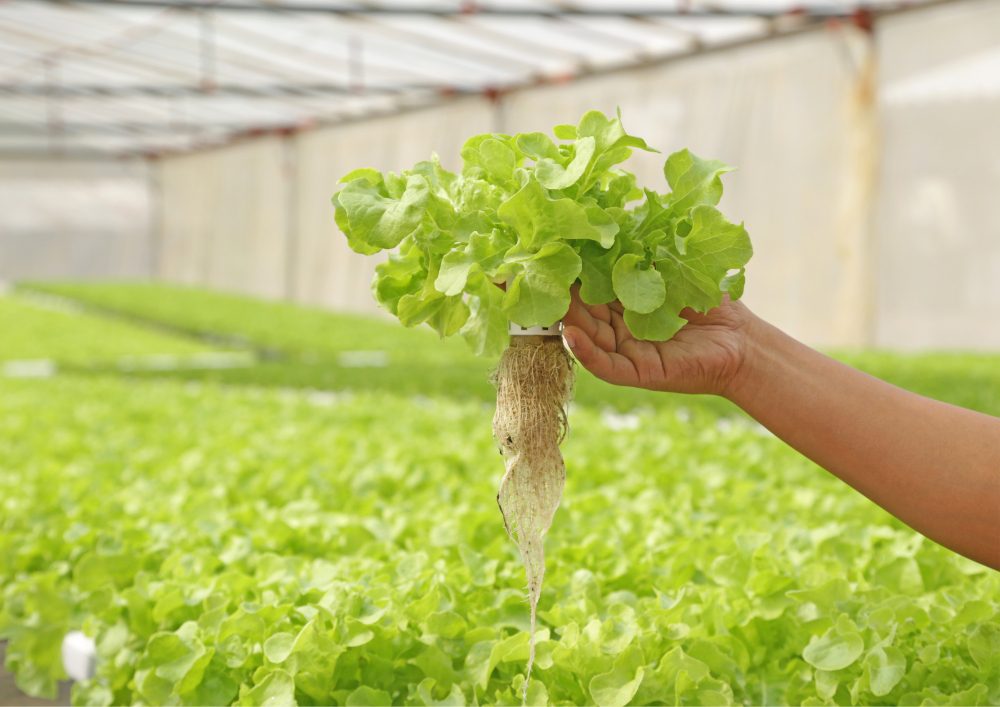
When you have the equipment, material, and seedlings ready, below are the steps to take in building your hydroponic setup:
Selecting the Right Location
The first step is choosing the right spot for your hydroponic setup. Consider the size of all equipment, trays, and pipes installed in that space. Make your hydroponic garden close to a water source and electrical convenience outlet.
Assembling Your System
In the next step, we set up grow trays, assemble a frame for your lights, and connect water pumps and air stones. The key is to follow the instructions that come with your specific system. Ensure the water pipes are correctly connected and secured during this step.
Installing Lighting
Hang your lights so they’re adjustable; this will let you move them closer or farther away from your plants as they grow. Make sure the lights are evenly distributed over the growing area to ensure all plants get the light they need. Connect the lights to a timer for automated control.
Preparing the Growing Medium
Next, get your growing medium ready. Whether using coco coir, perlite, or rock wool, ensure it’s clean and debris-free. Pre-moisten the medium before placing it in the grow trays or pots. This helps it absorb the nutrient solution more effectively.
Mixing Nutrients
Now it’s time to mix your nutrients. Always follow the instructions on your nutrient package to get the correct ratios. Use clean, filtered water to mix the solution and test its pH levels. Adjust as needed to fit the specific requirements of the plants you’re growing.
Planting Your Seeds or Seedlings
With everything set up, you’re ready to plant. If you’re using seeds, distribute them evenly across the growing medium. If you transplant seedlings, make holes in the medium and carefully place the plants. Ensure the roots make good contact with the medium for optimal nutrient absorption.
Monitoring and Maintenance
Check the pH and nutrient levels regularly and adjust as needed. Monitor your plants for any signs of nutrient deficiencies or disease. Proper maintenance will keep your hydroponic garden thriving and yield better harvests.
Plant Selection
What exactly can you grow with a hydroponic setup? Well, here are some of the vegetables and fruits you can cultivate with a soilless garden:
Lettuce
This green leafy veggie is a top pick for hydro newbies. It’s easy to grow and doesn’t need intense light. Use basic nutrients, and you’re good to go.
Basil
Who doesn’t love fresh basil? It grows well in hydro systems. Keep the pH between 5.5 and 6.5, and you’ll have a hearty plant.
Tomatoes
These red fruits need a bit more love. Special nutrients with higher levels of phosphorus, nitrogen, and potassium are key. This will help during their flowering and fruit stages.
Strawberries
Want fresh strawberries? You can grow them hydroponically! They like a slightly acidic setting, so aim for a pH of 5.5 to 6.0.
Cucumbers
Cucumbers are climbers, so give them room. They like lots of light and warmth. Basic nutrients work, but a dash of extra calcium can help.
Peppers
Similar to tomatoes, peppers need special care. When they start to flower, up the phosphorus and potassium. Special nutrients for peppers can make a big difference.
Kale
If you’re into superfoods, grow some kale. It’s not fussy about temperature and enjoys moderate light. A standard nutrient mix will keep it happy.
Mint
This herb grows like a champ in hydro setups. Keep the pH between 6.0 and 7.0. Standard nutrients are just fine for mint.
Zucchini
This squash loves hydroponic life. Keep temps around 70 to 75 degrees Fahrenheit for best results. Add extra calcium and magnesium as the plant grows.
Conclusion
Whether you’re cramped for space or want to try something new, hydroponics is your ticket to fresh, homegrown food. A hydroponics garden is a great way to maximize indoor space or if you do not have any room for an outdoor garden.
Remember, Team OBN always prioritizes safety above all else. Ensure the water tubes are properly connected to avoid flooding and malnourished plants.








